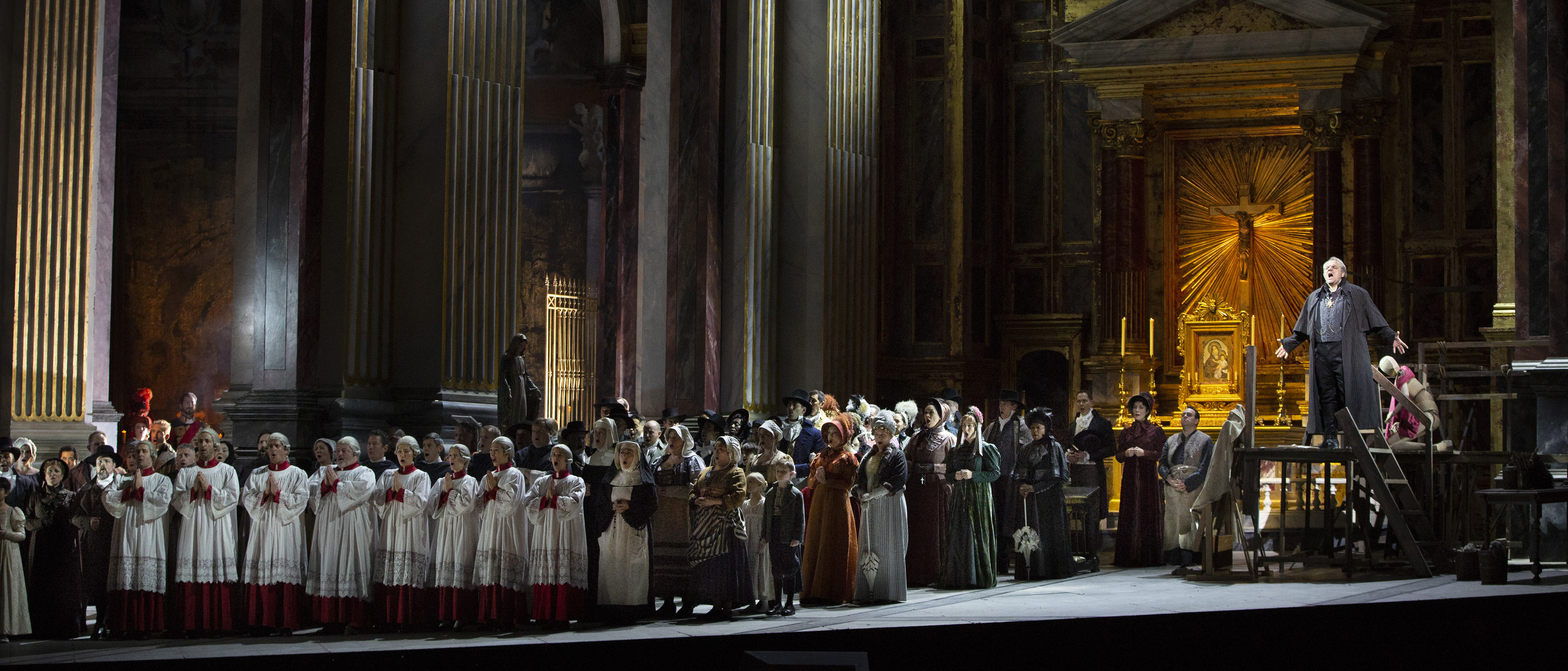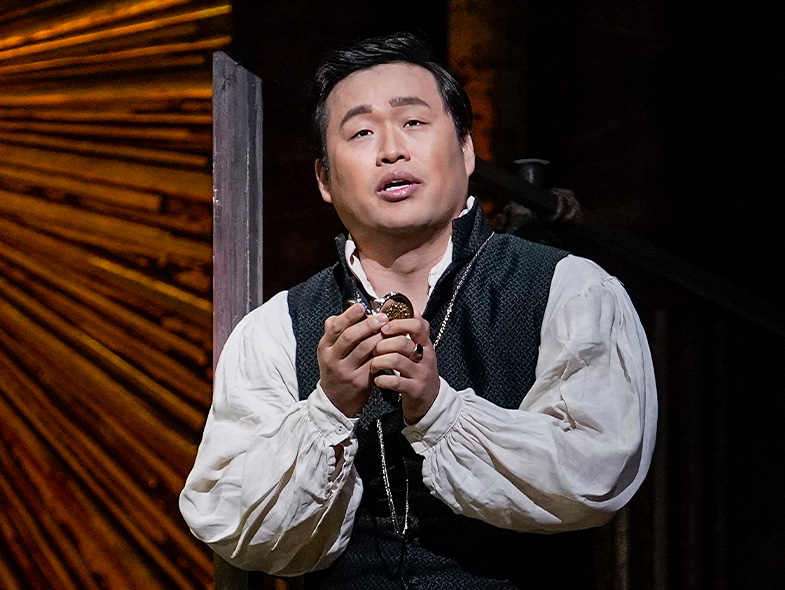
Tosca
Searing passion, grisly violence, and a jealous soprano: No story is more operatic than Tosca, and no opera is more thrillingly dramatic than Puccini’s classic. The opera premiered in 1900, but the riveting story first appeared 13 years prior as a play by the French author Victorien Sardou. With the smoldering actress Sarah Bernhardt in the title role, Sardou’s work toured Europe in a blaze of glory. With the help of his frequent collaborators Giuseppe Giacosa and Luigi Illica, Puccini set about adapting Sardou’s drama for the opera stage. Equal parts brutal thriller, tragic romance, and musical tour de force, Puccini’s opera shocked and delighted audiences at its premiere and has remained among the world’s most popular operas ever since.
The story unfurls in Rome in June 1800. The Kingdom of Naples rules the city with an iron fist. Napoleon’s armies rattle their sabers to the north. And in the midst of it all, one woman is forced to choose among political allegiance, personal ambition, and love. David McVicar’s production brings the opulence and splendor of the Eternal City to the stage of the Metropolitan Opera, and despite its Napoleonic-era setting, Tosca’s story—about love, loyalty, human frailty, and superhuman determination—is as timeless as Rome itself.
This guide presents Tosca as a musical thriller, inviting your students to explore how music, poetry, and stagecraft all contribute to a detailed and compelling story. The materials on the following pages will enable students to dive into the art of operatic adaptation, Puccini’s compositional techniques, and the historical people and places that populate this classic work. By presenting Tosca as a narrative work that has much in common with the novels, movies, and TV shows that your students consume every day, this guide will help students of all ages develop the confidence to engage with opera even after they leave the theater.
Included in the 2017-18 and 2024-25 seasons of HD Live in Schools.

